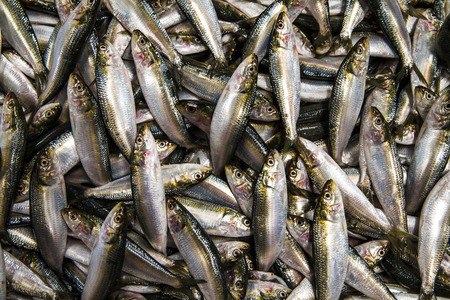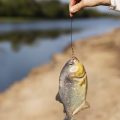1. Overlooking Seasonal Patterns
One of the most common mistakes in bass fishing is ignoring how much bass behavior changes with the seasons. Many anglers hit the water with the same tactics year-round, not realizing that bass move and feed differently depending on the time of year. If you want to increase your chances of landing more fish, you need to pay attention to seasonal patterns.
Why Seasonal Patterns Matter
Bass are highly influenced by water temperature, daylight hours, and food availability. These factors change from spring to summer, fall, and winter, causing bass to relocate and adjust their feeding habits. Knowing where bass are likely to be and what theyre doing during each season can make a huge difference in your success.
Typical Bass Movements by Season
| Season | Bass Location | Best Lures & Techniques |
|---|---|---|
| Spring | Shallow water near spawning beds | Soft plastics, spinnerbaits, jigs |
| Summer | Deeper water, shady spots, under docks | Crankbaits, topwater lures early/late, Texas rigs |
| Fall | Chasing baitfish in coves and shallow flats | Lipless crankbaits, swimbaits, jerkbaits |
| Winter | Deepest parts of lakes or slow-moving water | Spoons, blade baits, slow-rolled jigs |
Tips for Staying on Top of Seasonal Changes:
- Check local fishing reports before heading out.
- Pay attention to water temperatures—bass get more active as it warms up in spring.
- If youre not getting bites where you usually do, try changing depths or locations based on the season.
- Experiment with lure size and color to match what bass are feeding on at different times of year.
By keeping seasonal patterns in mind and adapting your approach, youll avoid one of the biggest pitfalls many anglers face—and youll put yourself in the best position to catch more bass all year long.
2. Using the Wrong Lure or Presentation
One of the biggest mistakes in bass fishing is picking lures that don’t match what the bass are actually eating, or not switching up how you work your bait. Bass can be picky eaters, and their preferences often change with the seasons, weather, and even the time of day. If you’re using a bright-colored spinnerbait when the local forage is mostly small shad or crawfish, you’re probably getting fewer bites than you should.
Why Matching the Hatch Matters
Bass tend to go after prey they’re used to seeing. If you choose a lure that mimics the size, color, and action of local baitfish or other forage, you have a much better chance of catching fish. This is called “matching the hatch.”
Common Forage Types and Best Lure Choices
| Forage Type | Lure Color | Lure Style |
|---|---|---|
| Shad | Silver/White | Crankbaits, Swimbaits |
| Crawfish | Brown/Red/Orange | Jigs, Soft Plastics |
| Bluegill/Sunfish | Green/Blue/Purple | Spinnerbaits, Swim Jigs |
| Frogs/Insects | Green/Black/Brown | Topwater Frogs, Poppers |
The Importance of Presentation
Even if you have the right lure, how you present it matters just as much. Sometimes bass want a fast-moving bait; other times they prefer something slow and subtle. Successful anglers pay attention to water clarity, temperature, and fish activity levels—and then adjust their retrieve speed and style accordingly. For example:
- Muddy water: Use brighter colors and slower retrieves so bass can find your bait.
- Clear water: Go for natural colors and a more subtle presentation.
- Cold fronts: Slow down your retrieve; bass usually become less active.
- Active feeding times: Try faster, more aggressive retrieves.
Troubleshooting: Adapting on the Water
If you aren’t getting bites, switch things up! Change your lure color or style, try a different retrieve speed, or even move to another spot. Keeping an open mind and adapting to what the fish want is key to increasing your success on the water.
![]()
3. Neglecting Weather and Water Conditions
One of the most common mistakes bass anglers make is ignoring the impact of weather and water conditions. Bass are sensitive to changes in their environment, and understanding how these factors affect their behavior can make or break your day on the water.
Why Conditions Matter
Bass react differently based on water clarity, temperature, and current weather patterns. If you dont pay attention to these elements, you might find yourself fishing in the wrong spots with the wrong lures at the wrong times.
Key Factors to Watch
| Factor | What to Look For | How to Adjust |
|---|---|---|
| Water Clarity | Clear or stained water | Use natural colors in clear water; try darker or brighter lures in stained water |
| Water Temperature | Cold, moderate, or warm temps | Fish deeper and slower in cold water; shallow and faster in warmer temps |
| Weather Patterns | Sunny, cloudy, rainy, windy days | Bass may hide under cover on sunny days; become more active before storms; move shallower on overcast days |
Real-World Example
If a cold front moves in overnight, bass might slow down and stay closer to the bottom. On a warm, cloudy afternoon, they could be cruising shallow flats looking for food. Ignoring these changes will leave you wondering why your favorite lure isnt working.
Quick Tips for Adapting
- Check local weather forecasts before heading out
- Bring a variety of lures to match changing conditions
- Pay attention to surface activity and adjust your approach if things look different than usual
- Talk to other anglers or bait shops for up-to-date info on whats working that day
The best bass anglers are always adapting. By keeping an eye on weather and water conditions, youll put yourself in position to catch more fish every trip.
4. Poor Casting and Boat Positioning
One of the biggest mistakes even experienced bass anglers make is sloppy casting and bad boat placement. Inaccurate casts and careless boat control can easily spook bass or cause you to miss those high-percentage fishing spots where the big ones are hiding.
Why Casting Accuracy Matters
Bass are often holding tight to cover like docks, fallen trees, or patches of grass. If your lure lands too far from these targets or makes a loud splash, you’ll either miss the strike zone or scare the fish away. Accurate casting lets you present your bait right where bass are most likely to bite, increasing your chances of hooking up.
Common Casting Mistakes
| Mistake | How It Costs You Fish |
|---|---|
| Casting too far from cover | Misses active bass waiting in ambush spots |
| Loud lure entry | Startles nearby fish and shuts down bites |
| Poor casting angles | Lure doesn’t move naturally, reducing strikes |
The Importance of Smart Boat Positioning
Your boat position controls your casting angles and how stealthy you approach a spot. Get too close, and you might alert bass to your presence with noise or shadows. Stay too far back, and it’s tough to cast accurately into cover. The key is to stay just close enough for precise casting without tipping off the fish.
Boat Positioning Tips for Bass Fishing Success
- Approach quietly: Use a trolling motor on low speed when nearing prime areas.
- Stay downwind: Let the wind help you drift quietly into position.
- Watch your shadow: Avoid casting shadows over shallow water where bass are hiding.
- Work angles: Cast at different angles around structure to find where bass are positioned.
Quick Reference: Good vs. Bad Practices
| Good Practice | Bad Practice |
|---|---|
| Casting quietly next to cover | Splashing lures directly on top of fish |
| Maneuvering boat slowly and silently | Bumping the boat into logs or docks loudly |
| Staying just far enough for accurate casts | Sitting right on top of the fishing spot |
5. Giving Up Too Soon on Productive Spots
One of the most common mistakes even experienced bass anglers make is leaving a promising fishing spot too quickly. When you’re not getting immediate bites, it’s easy to get impatient or start doubting your choice of location. But in many cases, spending just a bit more time and working the area more thoroughly can mean the difference between an empty livewell and a brag-worthy catch.
Why Anglers Leave Too Soon
Many times, impatience or lack of confidence leads us to move on before really giving a spot a fair shot. Maybe you saw some surface activity or had a strike but didn’t land the fish. Instead of switching tactics or lures, it’s tempting to just pull up anchor and search for “greener pastures.”
Signs You Should Stay Longer
| Sign | What It Means |
|---|---|
| You had a recent strike | Bass are present and active—try changing your presentation before moving on. |
| Visible baitfish or surface activity | Bass often follow baitfish; where there’s food, there’s usually predators. |
| Good structure (logs, rocks, weed lines) | Bass love cover; work the area thoroughly from different angles. |
Tips for Making the Most Out of Each Spot
- If you get a bite but miss the hookset, try casting back quickly—bass often strike again if they’re aggressive.
- Change up your lure color, size, or retrieval speed before moving on.
- Fish the area from multiple directions—you might trigger bites by simply changing your casting angle.
- If you see bass following but not biting, try downsizing your bait or switching to a finesse technique.
Remember, patience pays off in bass fishing. Many pros will tell you that some of their best days came from sticking with one spot and figuring out what makes those fish bite. Next time you’re tempted to give up on a productive area too soon, slow down and give it another shot—you might be surprised by what you catch!


